Gamification for fundraising: A guide for charities
Roughly an 8 minute read by Evie
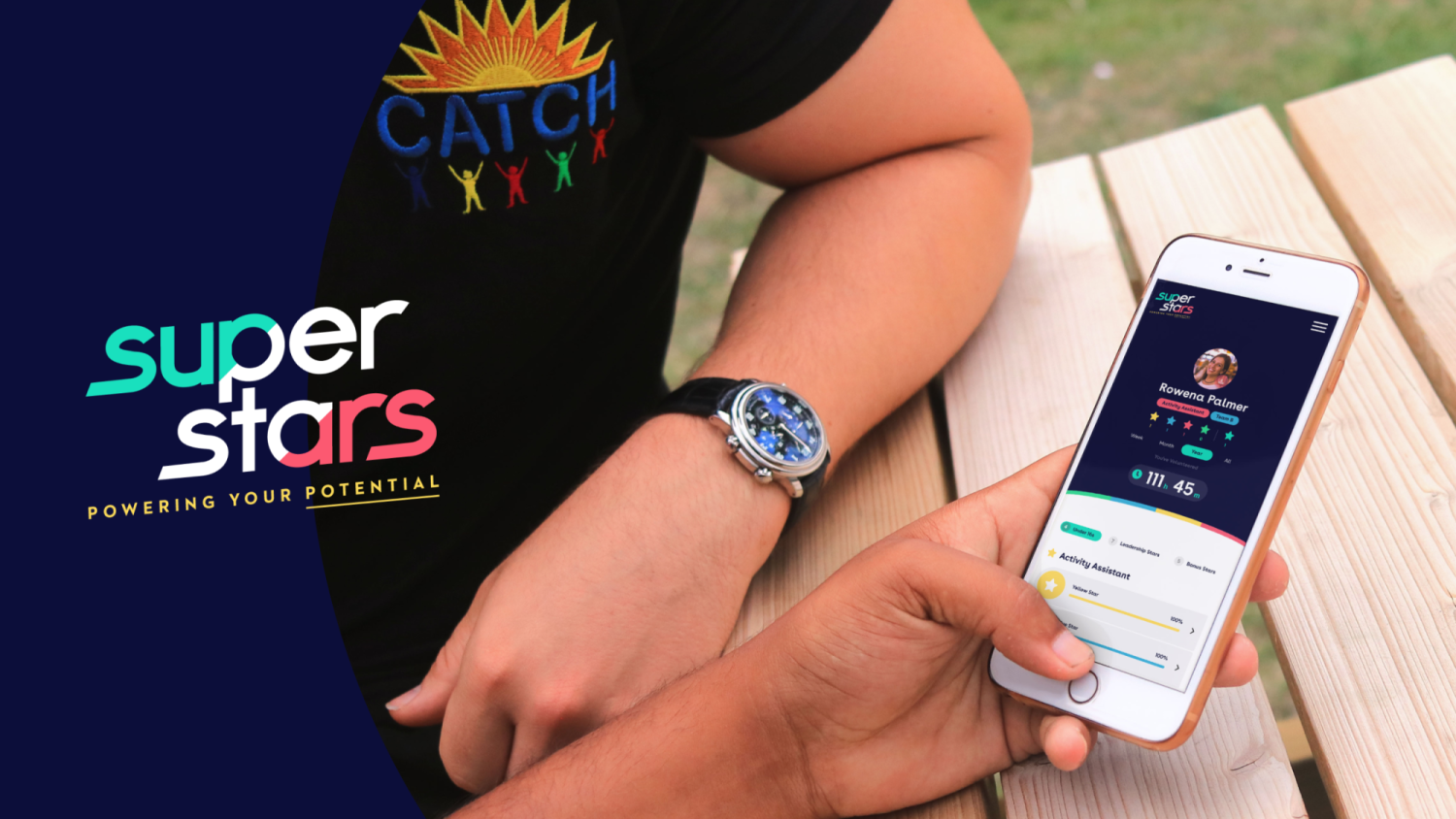
Gamification is quickly emerging as a powerful tool for charities, in a digital space where engagement is key. It has the ability to transform the way you connect with your supporters on a much deeper level, by weaving game-like elements into various aspects of your operations.
The end result? Non-profits can not only boost their fundraising efforts but also enhance CRM growth, volunteer engagement, mission education, corporate partnerships and more.
This blog explores how gamification can really supercharge your charity’s work, and is packed with practical examples and data to help you leverage this tool and unlock its full potential.
The benefits of gamification for charities
1. Fundraising: Play your way to higher donations
Gamified activations can revolutionise fundraising by turning it into an interactive and engaging experience. Here’s just a handful of tactics to consider:
- Fundraising leaderboards: Tap into that competitive spirit by creating leaderboards for fundraisers. This friendly competition encourages participants to raise more while giving you valuable insights, like where your supporters are located for targeted campaigns.
- Achievement badges and rewards: Offer digital badges for milestones like first donations or hitting fundraising goals. These shareable badges provide recognition and motivation, keeping supporters engaged and excited.
- Offline to online donation triggers: By placing QR codes within physical elements that link to your gamified campaign, you can sweeten the deal by offering instant rewards for their on-the-spot donations, turning a simple scan into a fun experience.
- Game types and mechanics: Choose mechanics that resonate with your audience. Quizzes can test their knowledge, scratchcards add an element of luck, and competitive arcade games let them show off their skills. These elements boost visibility and engagement for your cause.
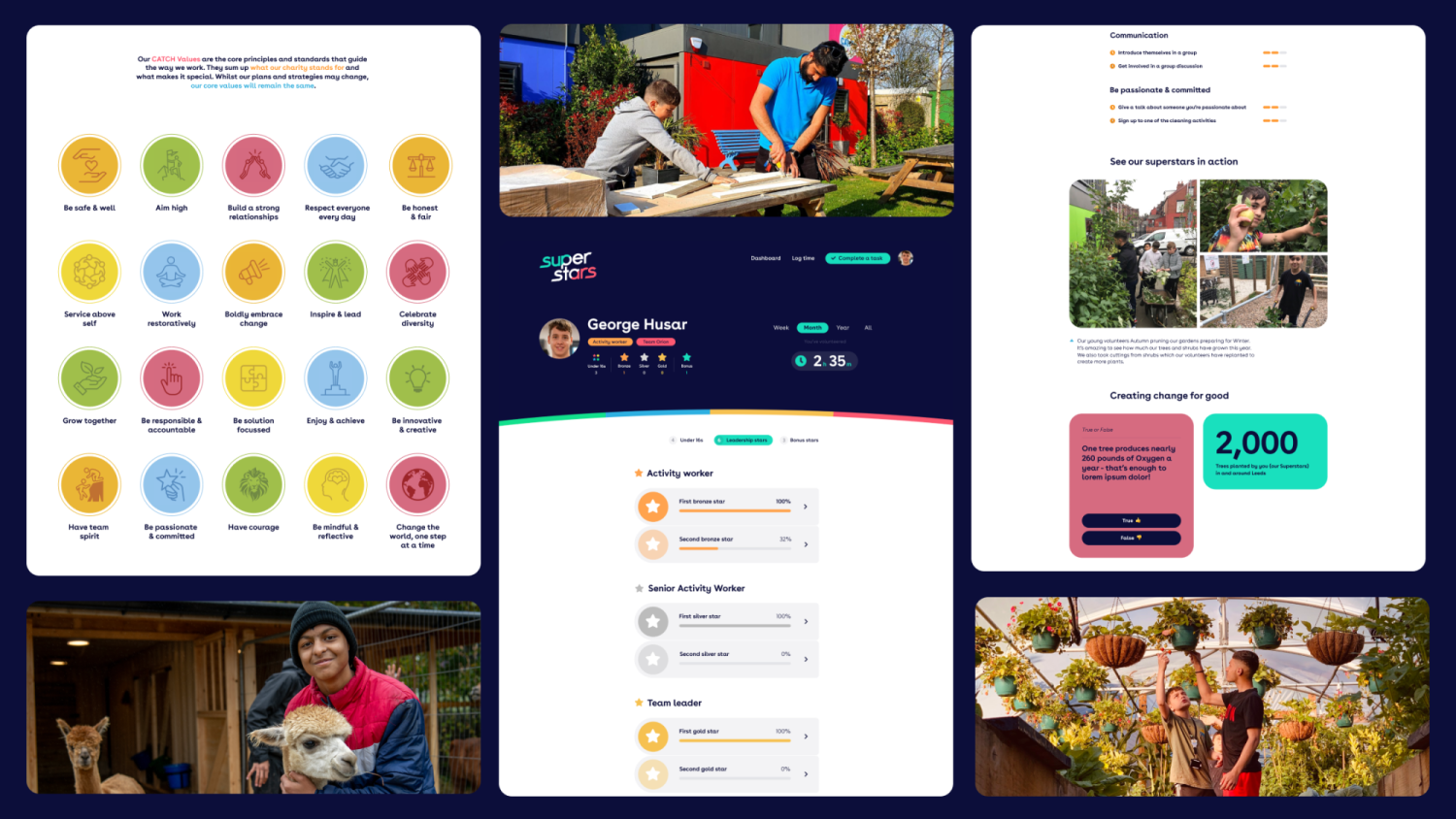
2. CRM growth: Building relationships
A robust Customer Relationship Management (CRM) system is vital for nurturing relationships with donors, volunteers, and partners, while also providing a lasting and valued stewardship journey.
According to a Gartner report, organisations that successfully integrate gamification into their CRM strategy can expect to see a 30% increase in user engagement. This engagement is crucial to maintaining strong relationships and driving tangible ROI through donations and committed giving. With this in mind:
- Acquire first-party data: Create gamified activations and experiences that require user sign-ups, gathering valuable data for your CRM. For example, a challenge-based gamified activation that’s well aligned with your mission can educate users while also collecting valuable information for future campaigns. Win-win.
- Personalise your approach: Use CRM data to tailor campaigns to each user’s interests. For instance, if someone often supports animal welfare, create a fun virtual pet based challenge just for them. This tailored content will boost engagement and donations, strengthening your bonds with supporters.
3. Corporate partnerships: Amplify your impact
Corporate partnerships can provide substantial value for both charities and businesses. Adding gamified activations into the mix strengthens these partnerships to be more attractive and effective for all involved:
- Co-branded activations and experiences, to drive data collection and donations: Collaborate with corporate partners on joint campaigns where achievements translate directly to donations. For example, collecting virtual coins could result in real money donations. Hosting these across audiences means more data collection and mission exposure.
- Internal fundraising platforms: Develop gamified platforms for corporate partners where employees’ physical activities, such as miles run, link to fundraising efforts. You can easily integrate with fitness apps like Strava to track and motivate participation, turning corporate wellness into a cause-driven activity.
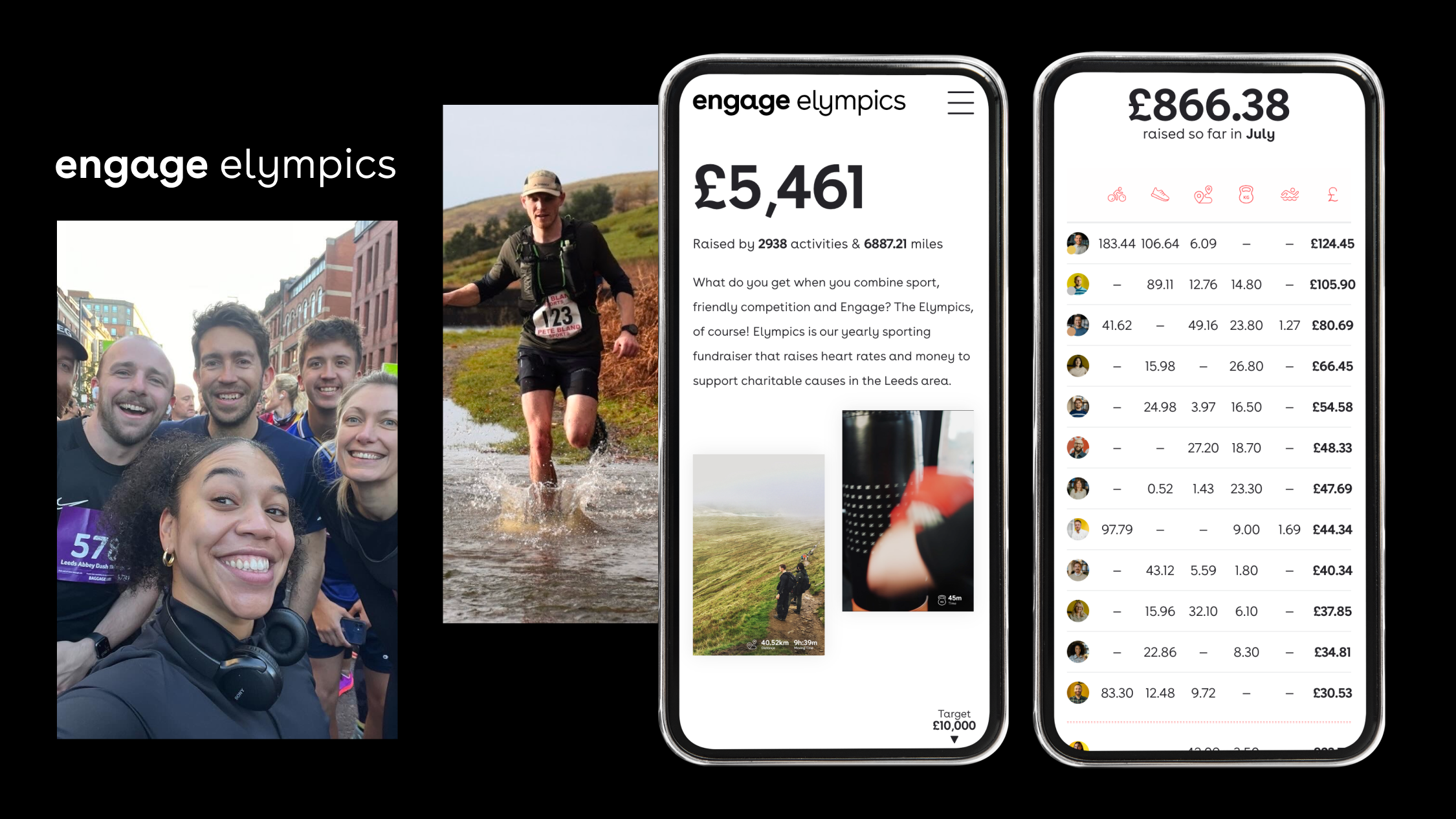
Real world example: Raising the bar for charity and our wellbeing with the Engage Elympics.
The Engage Elympics is our annual challenge to become the healthiest agency in the UK, all while raising money for our nominated charities.
As part of this initiative, different exercises are assigned varying values based on the effort involved. All activities are tracked using Strava, allowing us to collect valuable data which feeds into our monthly Elympics leaderboard. The more activity we complete, the more we donate - fueling friendly competition, (and a buzz around the office!).
Now in its 8th year, we’ve raised nearly £70,000, and our team is happier and healthier as a result!
4. Education and inspiration: Bring your mission to life
Charities often struggle to convey their mission and impact effectively, at pace. Yet research by Tech for Good shows that non-profits that prioritise educational content centred around their mission and impact of work, receive 29% higher engagement compared to those that don’t. Here’s where gamification comes in; it offers the opportunity to deliver speedy experiences that can both educate and engage, for example:
- Interactive quizzes: Create quizzes that test users’ knowledge about your cause. Not only do they engage participants, but they also provide insights into their understanding and interests, helping you tailor future content and campaigns.
- Mission-based gamified activations: By developing gamified activations that reflect your charity’s goals through storytelling, you can drive engagement and educate users, while capturing data for marketing efforts.
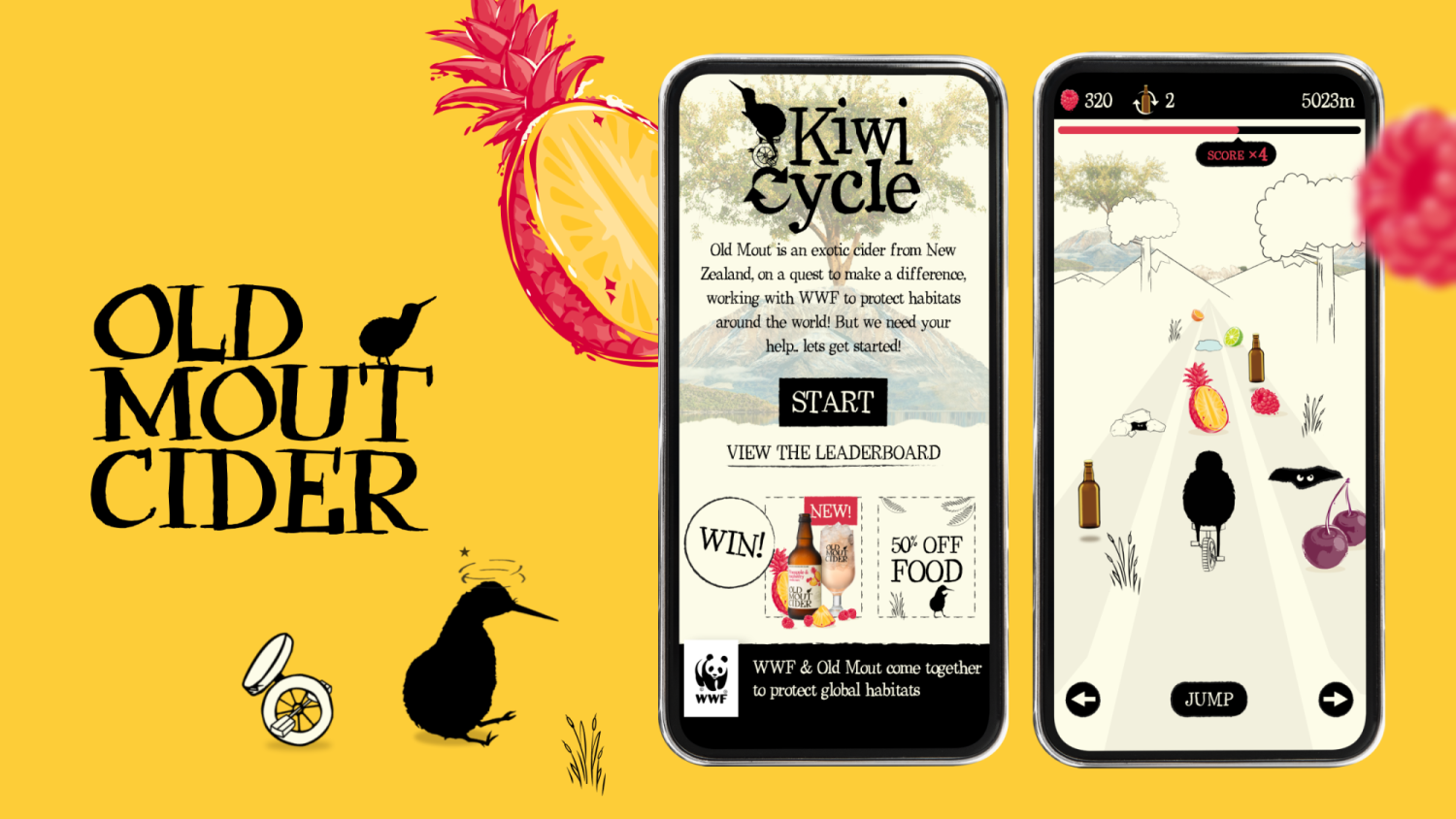
A real-world case study: Old Mout Cider’s CSR initiative engages audiences and drives impact
Old Mout Cider aimed to save New Zealand’s native kiwi bird from extinction with a CSR initiative focused on action, not just awareness. We partnered with Mitchells & Butlers to create “Kiwi Cycle,” a fun and impactful gamified activation.
Players helped a kiwi bird collect fruit and Old Mout bottles for recycling, with each bottle donating 1p to WWF. Integrated into the Mitchells & Butlers app, the gamified activation entertained and educated players on Old Mout’s sustainability efforts.
The campaign drove 40,000 app downloads, a 70% reward redemption rate, and raised over £10,000 for WWF, creating real conservation impact while boosting brand visibility, mobilising communities, and increasing footfall into Mitchell & Butlers pubs.
Want to see how it works? Play the demo here.
5. Volunteer engagement: Energise your teams
Keeping volunteers motivated and engaged is crucial for sustained success and to prevent fatigue. Track progress and gamify achievements in a way that keeps them moving:
- Volunteer platforms: Why not implement platforms that gamify volunteer tasks? These let you track progress, offer badges and rewards for completed tasks, and create leaderboards to create that vital sense of community and competition. Looking for inspiration? Find out more about the volunteering development platform we created for Catch, our charity partner.
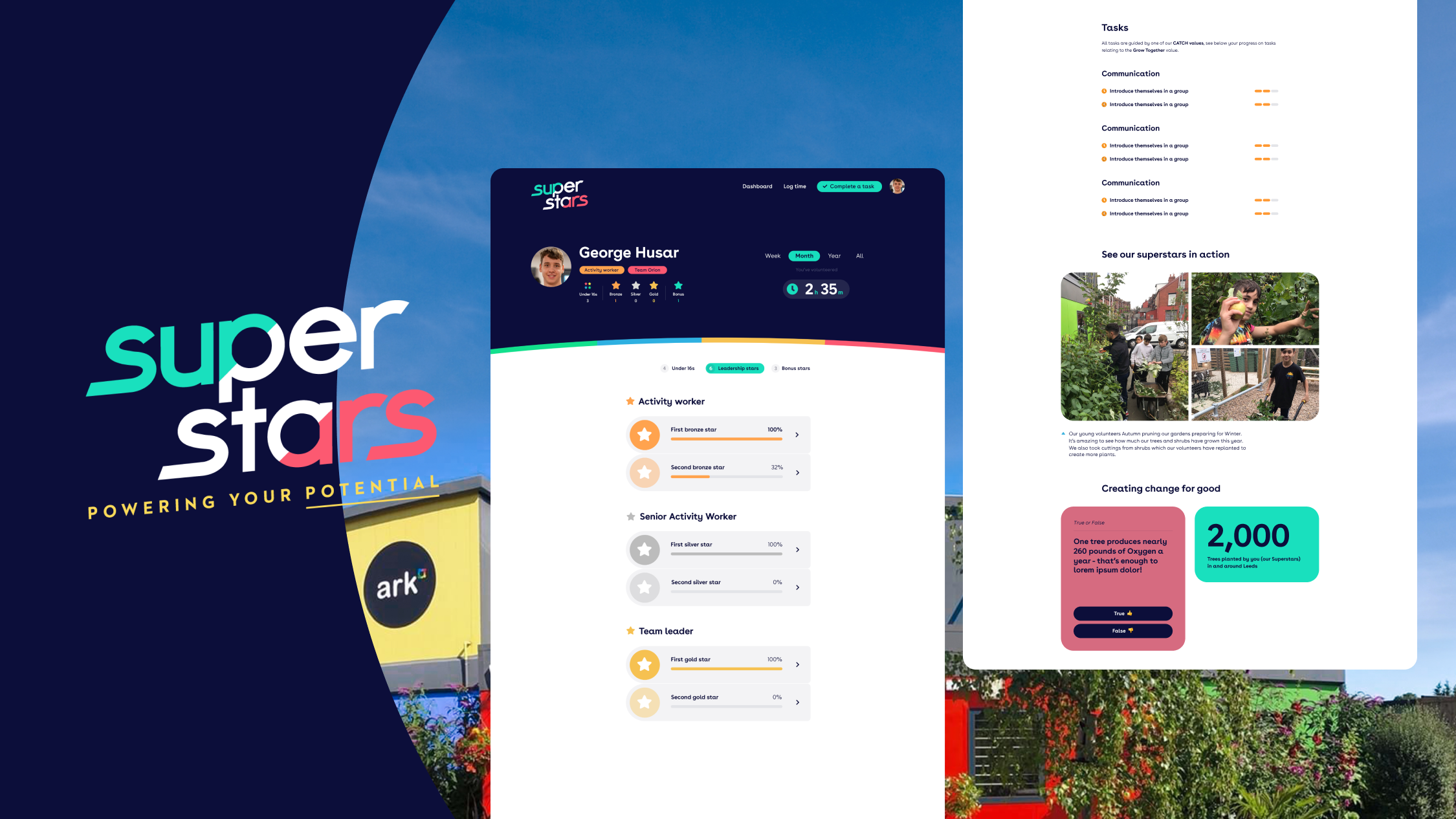
Key considerations for charities in gamification
Incorporating gamification in the non-profit landscape can be transformative — for a range of departmental objectives — but it’s not without its challenges. Here’s how to address some of the most common:
1. Cost and resources
The challenge: Limited budgets might make gamification seem like a big investment.
The solution: Gamification drives tangible, measurable results, making it a smart investment with clear ROI. By starting with a scalable solution, you can quickly demonstrate tangible outcomes like additional CRM opt-ins, higher conversions, donations - making the investment worthwhile and modelable from the outset.
2. Engagement fatigue
The challenge: Over time, participants may lose interest if the gamified elements become repetitive or predictable.
The solution: Keep the experience fresh by rotating challenges, updating rewards, and introducing new elements periodically. For example, you could change the themes of challenges based on current events or seaons, or offer limited-time rewards that encourage ongoing participation. Variety is key to sustaining interest and avoiding burnout.
3. Data privacy
The challenge: Collecting data through these campaigns can raise privacy and compliance concerns.
The solution: It’s crucial to prioritise data protection. Make sure you’re transparent with participants about what data you collect and why. Comply with relevant privacy regulations such as GDPR by implementing robust security measures and providing clear, accessible privacy policies. Not so much a challenge when considered from the get-go.
It’s game time
Gamified activations and campaigns offer not-for-profits a fresh, strategic avenue to engage their audiences in a memorable, interactive way. Deepening connections while driving mission-aligned objectives.
And the impact of gamification is real. In fact, M2 Research found that effective gamification can lead to a 100%-150% increase in engagement metrics, with supporting studies suggesting a notable 22% boost in loyalty.
What does this mean for your non-profit? Well, if you can successfully integrate gamification into your strategy, you can expect to see more active and committed supporters, along with a measurable rise in donations and volunteer participation.
Ready to get started? You’ve come to the right place. At Engage, we work with a number of leading charities to help them win online. And yours could be next. Get in touch today to discover how we can help!